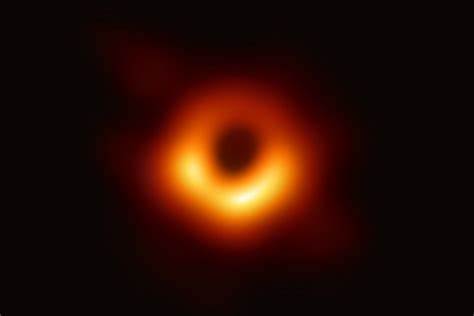Our first view of a black hole
人類首張黑洞照片問世!
They are considered as one of the most mysterious objects in the universe. We knew they existed, and that they swallowed up everything around them, but it was on April 10 that we finally got to see a black hole in a photograph.
它們被認為是宇宙中最神秘的物質之一。我們知曉它們存在并吞噬著周遭的一切,但直至4月10日,我們才在一張照片中看到了黑洞。
According to the Guardian, the picture shows a halo of dust and gas at the heart of the M87 galaxy, 55 million light-years away from Earth.
據《衛報》報道,該照片顯示的是一個由塵埃和氣體組成的光環,其位于星系M87中心,距離地球5500萬光年。
As Time put it, the picture may "open one more tiny crack" onto the secret of the universe.
正如《時代周刊》所言,這張照片或許在宇宙的謎團之上“打開了又一道細小的裂縫”。
However, the photo doesn't show a black hole itself. That's because a black hole, with its great density, produces such a powerful gravitational field that nothing – not even the light – can escape its pull. It's only when surrounding objects, like gas, dust, stars and light are sucked into one, that it is possible to get a photograph.
但這張照片并未展現黑洞的樣貌。因為密度巨大的黑洞能夠產生強力的引力場,一切物質 —— 乃至光線 —— 都無法逃離其引力。只有當氣體、塵埃、恒星、光線等周遭物質被吸入黑洞時,才有可能拍到一張黑洞的照片。
Though the picture just outlines the black hole, getting and showing it to humans are still not simple.
盡管這張照片僅僅描繪出了黑洞的大致輪廓,捕捉這張照片并公之于眾也并非易事。
The first challenge lay in the remoteness of the black hole. Trying to get the photo was like "trying to spot an orange on the surface of the moon with the naked eye," Time reported.
第一個挑戰便是和黑洞之間的遙遠距離。據《時代周刊》報道,拍攝這張照片就像“試圖用裸眼在月球表面發現一個橘子”。
In order to solve this problem, astronomers placed eight observatories in four continents. This global approach was key to getting the picture.
為了解決這一問題,天文學家們在四大洲上設立了八個觀測站。這個全球性的措施是拍攝該照片的關鍵。
The collection of the data was completed in barely a week, but the analysis of it took the better part of the past two years.
數據的收集工作在不到一周的時間內便完成了,但分析工作卻占據了過去兩年間的大部分時間。

Due to the telescopes in the different places, scientists couldn't share the information they collected with each other and only stored it independently. It wasn't easy to bring together these huge amount of data. The process involved transferring the data to different computer groups in order to produce the final image.
由于望遠鏡都分布在不同的地點,科學家們無法與彼此分享收集到的信息,只能將信息獨立地儲存起來。匯聚這些大量的數據也并非易事。這一過程包括了將數據傳輸至不同的計算機組,從而獲得最終的影像。
The final image is a big deal. As the Guardian noted, "it predicts a revolution in our understanding of the universe's most enigmatic objects."
最終的影像非同小可。正如《衛報》所指出的那樣:“它預測了一場我們對于宇宙最神秘的物質的認知革命。”
One day, if we can uncover their secret, humans might "use black holes to time travel forward", according to National Geographic. We may be able to find out what the world will be like in the future.
《國家地理》雜志認為,如果我們有朝一日能夠解開黑洞的秘密,人們或許能“利用黑洞前往未來”。我們或許能夠找出未來世界的樣子。











